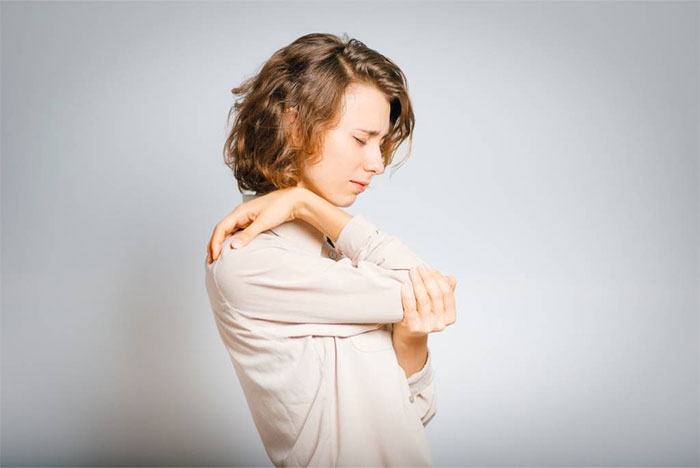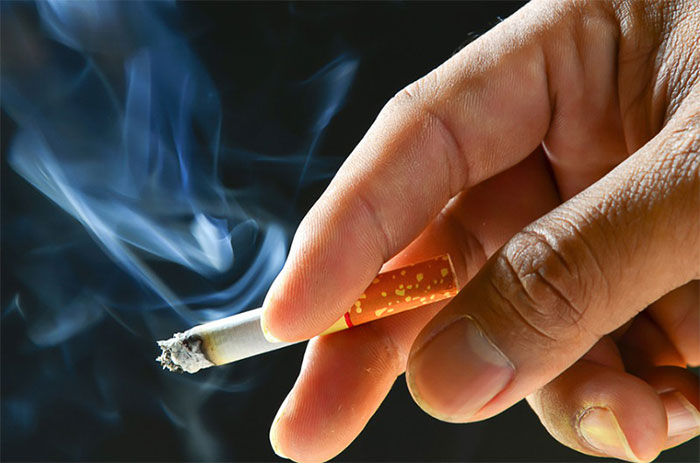Osteoporosis is a common condition that is increasingly prevalent among various demographics. But do we truly understand the causes of osteoporosis? What are the symptoms of this disease, and what should individuals with osteoporosis eat?
Osteoporosis: Causes, Dietary Guidelines, and Prevention
What is Osteoporosis?
Osteoporosis is the most common bone disease worldwide. It occurs more frequently in women than in men, with a ratio of 3:1. Osteoporosis has severe consequences, leading to fragile, thin bones that are easily fractured, even without trauma. This condition typically appears in middle-aged individuals, as the process of bone formation begins to decline while bone resorption increases due to a rise in the number of osteoclasts after the age of 30. As a result, the trabecular bone becomes thinner and less dense, leading to the formation of hollow spaces within the bones. This condition is often referred to as bone loss or osteoporosis.
Osteoporosis progresses silently. Patients may only experience vague aches and pains, gradual height loss, and spinal curvature. These symptoms are usually detected only after a long period. Many cases are only identified when there are signs of fractures.
Thus, we have a certain understanding of this frightening disease. Patients with osteoporosis should not underestimate the level of danger, as increased bone porosity leads to a higher risk of fractures. So, what causes osteoporosis?
Causes of Osteoporosis
Osteoporosis results from a loss of bone mass and structural changes due to an imbalance between bone formation and resorption. While there is no definitive cause, the following are specific factors that contribute to osteoporosis:
Underweight
Children born underweight or those who are stunted due to poor nutrition or unhealthy physical activity habits are more susceptible to osteoporosis. Additionally, individuals who follow unscientific weight loss diets are also at a higher risk.
Genetics
If a parent has been diagnosed with osteoporosis before the age of 50, the risk of osteoporosis and fractures in their children is likely to increase.
Women’s “Cycle”
During a woman’s monthly cycle, estrogen levels may drop, negatively impacting bone health. Furthermore, menopause is a time when estrogen levels decrease rapidly, leading to a more significant reduction in bone density during this phase.

Osteoporosis is a common condition among menopausal women.
Thin Bones and Low Bone Density
If, during youth, your bone density and mass are too low, the risk of developing osteoporosis will be exacerbated as you reach menopause.
Long-term Use of Corticosteroids
Prolonged use of corticosteroids can adversely affect bone health.
Symptoms of Osteoporosis
The condition of bone loss (also known as decreased bone density) due to osteoporosis often does not present clear symptoms. Patients may be unaware of their condition until their bones weaken and are prone to fractures from minor injuries, such as a sprained ankle, impact, or fall.
Decreased bone density can lead to spinal compression fractures. Symptoms include acute back pain, height loss, a hunched posture, and a stooped gait.
Initially, the signs of osteoporosis are not obvious and may quietly progress. Clinical signs typically appear only after complications arise, when the body has lost about 30% of its bone mass.
Joint Pain
Joint pain, particularly in the fingers, may feel achy and fatigued, with discomfort radiating along the long bones. Additionally, there may be feelings of lethargy and occasional tingling, as if something is biting within the bones.
Back Pain
Pain may occur in the lower back or radiate to one or both sides of the rib cage. Pain along the spine may be accompanied by muscle stiffness and spasms whenever there is a change in posture.
Gradual Height Loss
A noticeable and observable symptom of osteoporosis is the gradual loss of height, often accompanied by back pain (in the thoracic spine) and discomfort in the lower back. In severe cases, a hunchback may develop, resulting in a stooped posture.
Brittle Bones and Increased Fracture Risk
A severe manifestation of osteoporosis is fractures, where bones become very brittle and can easily break with minimal impact.

Osteoporosis results in brittle bones that are prone to fractures.
Nutritional Guidelines for Osteoporosis Patients
An average adult requires 800 IU of vitamin D and 1,000 mg of calcium daily. However, the average Vietnamese diet only meets about 50% of the body’s calcium needs. A prolonged deficiency in essential nutrients can lead to osteoporosis. Notably, this condition progresses silently, and in its early stages, it is challenging to detect. When symptoms such as height loss, joint pain, or a hunched back appear, osteoporosis has often advanced significantly.
Many patients wonder what foods are beneficial for improving bone health and preventing osteoporosis from developing initially. Below are useful recommendations for those with osteoporosis.
A balanced diet and physical activity are two of the most fundamental factors in preventing osteoporosis. The diet should ensure adequate protein intake according to age requirements. A deficiency in protein can halt bone development, alter bone structure, and reduce blood calcium levels. Conversely, excessive protein intake can increase calcium excretion through the kidneys, raising the risk of fractures.
To prevent osteoporosis, you should consume plant-based foods containing phytoestrogens such as tofu, soy milk, and bean sprouts.
Ensure adequate vitamin D intake to enhance calcium absorption by exposing your skin to sunlight in the early morning. Avoid excessive alcohol, coffee, and smoking, as these can reduce calcium absorption or lead to calcium loss.
To maintain strong bones, adequate calcium intake is essential. However, not all calcium-rich foods are equally beneficial. If the mineral content is high but not appropriately balanced with magnesium and phosphorus, the body may struggle to absorb calcium.
Calcium is relatively abundant in various foods, but only those with a proper relationship between this mineral and other components are valuable:
- Dairy products are high in calcium and have a suitable balance with phosphorus and magnesium, making them easy to assimilate and fully utilized by the body. In addition to milk, patients should also pay attention to dairy derivatives such as cheese, yogurt, and flan. If necessary, patients can use specialized milk products designed to supplement calcium. However, it’s important to note that plant-based milks, such as soy milk, contain only 1/5 of the calcium found in cow’s milk; sweetened condensed milk has very little calcium but is high in sugar, which is not good for health.
- Canned fish also has a high calcium content and a suitable balance with phosphorus and magnesium.
- Cereals and their derivatives are rich in calcium but are harder to assimilate. Additionally, cereals contain phytic acid bonds with phosphorus, which can form insoluble bonds with calcium.
- Legumes have a better calcium-to-magnesium and phosphorus ratio, making them more valuable than cereals.
- Fruits and vegetables are not only beneficial for osteoporosis but also contribute to overall health. Patients should eat boiled vegetables to absorb as much calcium and vitamin D as possible from this food group. Good vegetables for bone health include broccoli, kale, soybeans, and cabbage. However, it’s important to note that excessive fiber intake can lead to calcium loss through the digestive system. Therefore, patients should only consume 100 grams of vegetables per meal.
- Freshwater crabs contain a lot of calcium, but their calcium-to-magnesium ratio is not ideal, making them less valuable.
- Shrimp, crabs, and fish: These seafood types contain a relatively high level of calcium, especially small shrimp that are eaten whole, which provide a rich source of calcium.
Thus, we have the answer to what patients with osteoporosis should eat, as well as the causes and symptoms of the disease. If anyone is showing signs of osteoporosis, they should quickly visit a doctor for treatment combined with the above dietary regimen to improve their condition rapidly.
Individuals at Risk of Osteoporosis
If you belong to any of the following groups, you should be cautious and consider regular check-ups as you are at high risk for osteoporosis.
Underdeveloped Physique
Individuals who are short, underweight, or have rickets and malnutrition from a young age are often more prone to osteoporosis due to their smaller stature resulting in lower bone mass.
The risk of the disease is also high for those who frequently have a poor diet, especially lacking in protein, calcium, vitamin D, K, or who follow an excessively restrictive diet.
If this continues from childhood, they may not achieve peak bone mass in adulthood.
Women Before and After Menopause
Women who have given birth multiple times and breastfeed but often lack essential nutrients, especially protein and calcium, are at risk for osteoporosis. The process of bone loss in women occurs faster than in men, particularly before and after menopause. Notably, during menopause, bone loss is most significant because the body reduces estrogen production, which affects calcium synthesis.
Women who experience early menopause or have had their ovaries removed are even more likely to develop osteoporosis.
Lack of Physical Activity
Moderate exercise stimulates bone formation. Additionally, outdoor activities help the body synthesize vitamin D from sunlight, enhancing calcium absorption. Therefore, individuals who are less physically active or have been bedridden for long periods due to illness are often more susceptible to osteoporosis.
Endocrine Disorders, Kidney Failure
Individuals with endocrine diseases such as hyperthyroidism, hyperparathyroidism, and adrenal gland hyperfunction, or those with chronic kidney failure who undergo long-term dialysis, which leads to significant calcium loss through urine, are at higher risk for osteoporosis.
Smoking and Alcohol Abuse

Tobacco and alcohol are enemies of bones.
Tobacco and alcohol are primary factors causing bone loss. Caffeine from coffee, tea, and soda, when consumed excessively, can also affect calcium absorption in the digestive tract. Smoking increases the risk of fractures and makes healing more difficult. Therefore, smokers and those who abuse stimulants are at very high risk for osteoporosis.
Using certain medications, such as anticoagulants, diuretics, asthma medications, anticonvulsants (e.g., Dilantin), and long-term corticosteroids for rheumatoid arthritis can be very harmful to bones.
Genetics
If parents have a history of osteoporosis, their children are also more likely to develop the condition. Therefore, if there are individuals in your family with osteoporosis, it is advisable to get checked as soon as possible.
Note: To prevent osteoporosis, pay attention to your diet, increase physical activity, limit alcohol consumption, and say no to smoking. When entering middle age or if you belong to one of the aforementioned groups, you should consider supplementing with calcium. There are many products on the market that provide calcium. However, be cautious when choosing to avoid purchasing products without clear origins.
- The highest “hidden” waterfall in the world, with a flow equivalent to 25 Amazon rivers, is difficult to see in person
- The global magnetic field intensity has decreased by 9%, will Earth follow a path similar to Mars?
- The only tribe without men: Women reproduce this way and abandon sons, leaving only daughters

















































